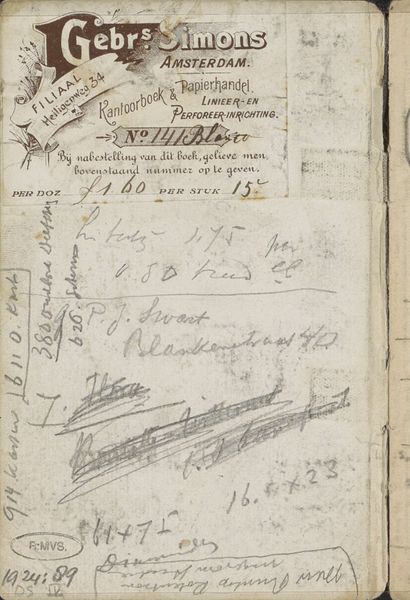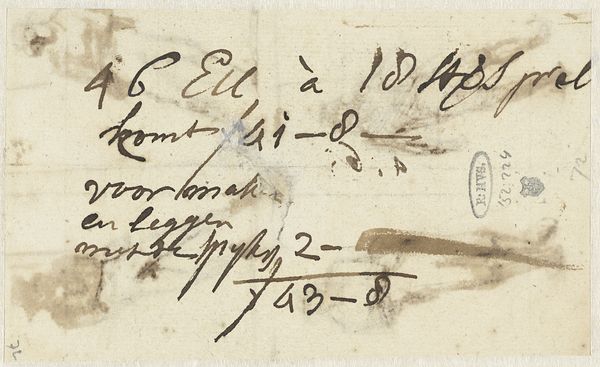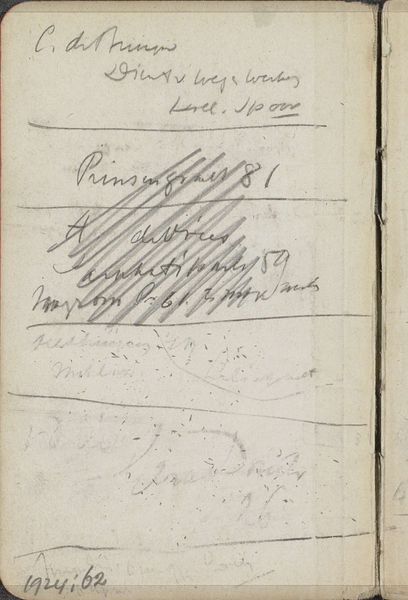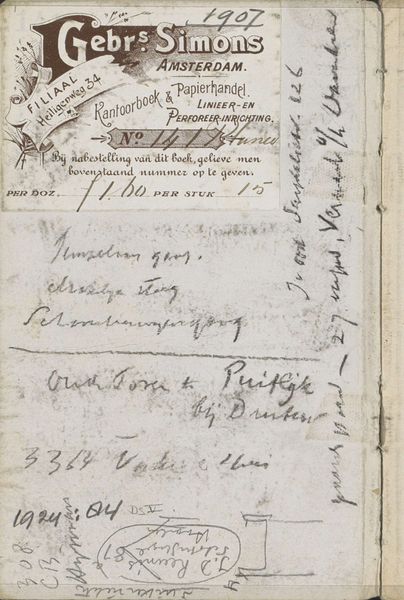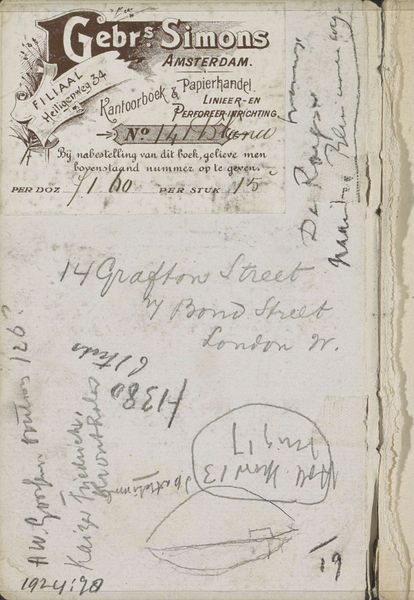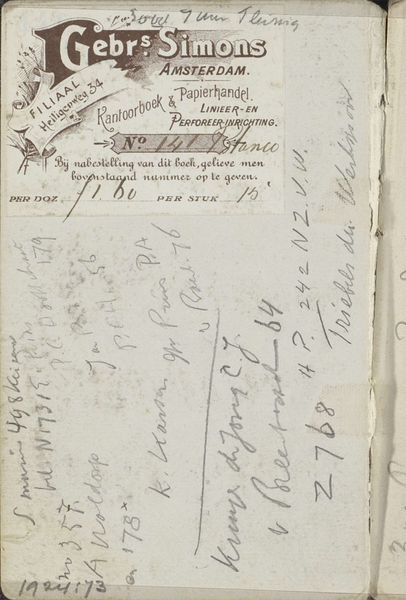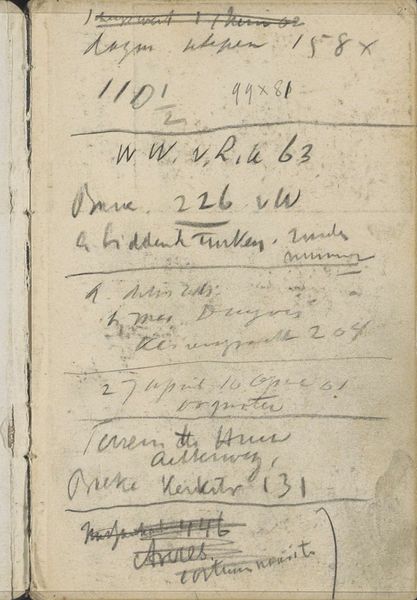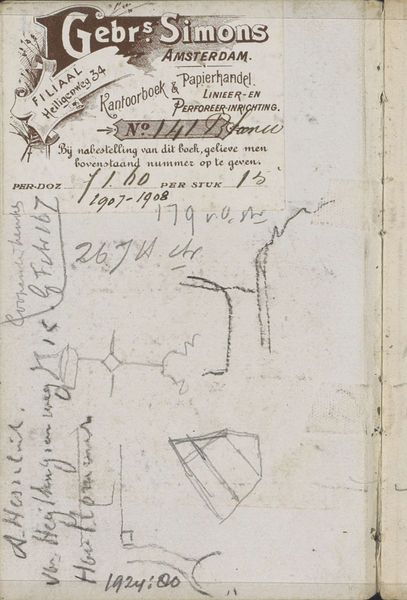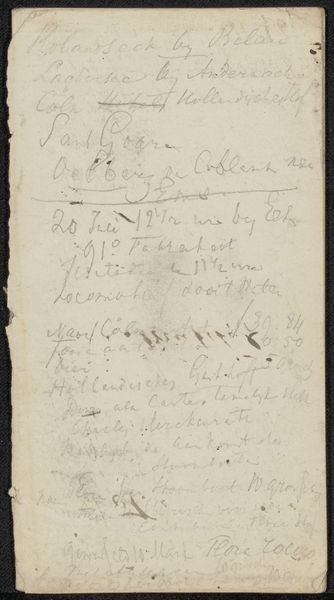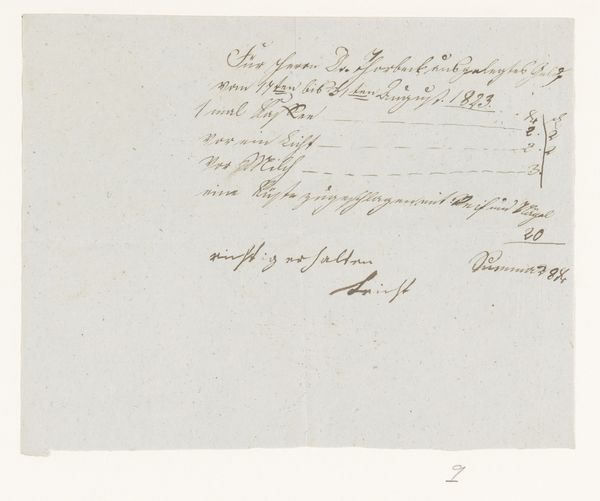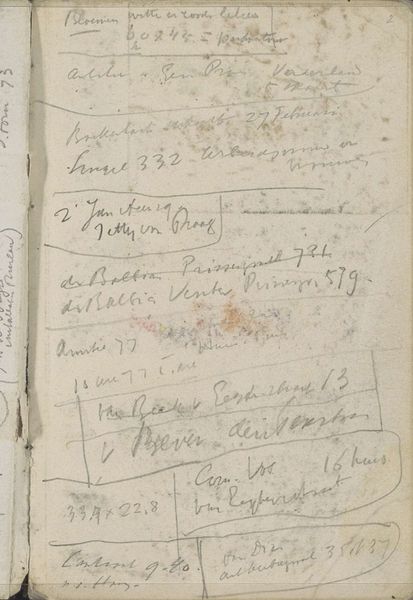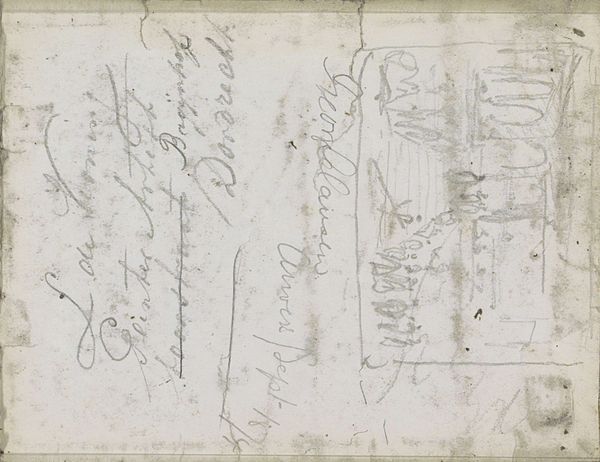
Copyright: Rijks Museum: Open Domain
Curator: Well, I find myself drawn in immediately by the intimate nature of this drawing; there's a delicate energy. It's almost dreamlike. Editor: Today, we are looking at a drawing called "Annotaties" by George Hendrik Breitner, thought to be from around the 1880s. This piece, which calls the Rijksmuseum home, uses ink and pencil on paper. I understand your perspective, there is an intriguing vulnerability to it. Curator: Vulnerability is precisely the word! Look closely. Do you see the marks and faded writing? It’s so clearly a raw, personal artifact, speaking to the human desire to document our days and surroundings, to fix fleeting thoughts and images into place. Editor: Certainly. Note the layering of notations; observe the way the line varies in weight and intensity—from nearly invisible wisps to bolder, confident strokes. These annotations are likely casual, ephemeral thoughts which now are valued enough to have been conserved. It suggests the mundane possesses latent profundity. Curator: I think this resonates profoundly within the broader discourse of whose stories are told, valued, and preserved. For centuries, archival practices privileged the elite. The preservation of common jottings opens up a different narrative thread, validating everyday experiences and democratizing history. Editor: I can see what you're getting at, and the tension it holds. Looking purely at the piece objectively however, do you notice the interplay between order and chaos? There's the grid-like structure formed by the lines of text, juxtaposed with these seemingly impulsive marks. The controlled strokes exist on the same plane as seemingly chaotic lines which brings an interesting quality to it. Curator: Yes, and thinking more of intersectionality we need to ask who could easily leave this “chaotic” trail of thought which would, much later, be praised in a museum? To leave a trace without worry, is unfortunately still tied to gender, race, and economic position. Editor: That offers another perspective to ponder while looking. This work, I feel, speaks of an artist immersed in their time, processing an experience of place through a language all their own. Curator: I agree wholeheartedly; understanding the historical lens enhances the work's resonance, enriching how we encounter it. Editor: And analyzing the forms helps to further illuminate what makes this particular example of ephemera worthy of examination.
Comments
No comments
Be the first to comment and join the conversation on the ultimate creative platform.
